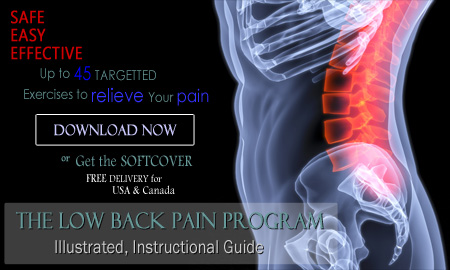Choosing the Right Book/eBook for Your Pain
Where do I Begin?
By Sherwin Nicholson | Updated May 1, 2020
There are more books about back pain in print than ever before. The list continues to grow every day. With the popularity of smartphones, e-readers, tablets and self-published eBooks, back pain sufferers can access an unlimited amount of help for their pain.
Are you looking for Videos as an alternative to reading?
The reality that back pain affects each one of us either occasionally, or on a daily basis, generates the high demand for much-needed help. There is no longer a shortage of assistance, but an overabundance.
We need access to data 24hrs a day
Because our very busy society requires us to limit our leisure time, books and eBooks continue to have an advantage. Simply Googling for help on ‘back pain’ can result in a very broad range of suggestions that can be overwhelming and confusing.
Among the many options for help such as a family physician, physiotherapist, chiropractor, massage therapist, and more, other options include books and eBooks. Most are authored by these very practitioners while some come from self-published professionals.
These days, the question is not ‘Why should I get a book on back pain?’, but ‘Which one?’ and ‘Will it work for me?’
The choices you need to make
To determine which book is suitable, look for the following:
- It intends to treat the exact nature of your pain.
- You do not want to run the risk of applying the wrong treatment and increasing your risk of injury and pain. Begin first with the strict advice of you medical doctor or back specialist.
- What the book is intended to treat directly and not superficially.
- The treatment involves at least 2 issues/deficiencies affecting the body (rarely is it one).
Focus is important for the reader
Some books are written to answer virtually every possible form of back pain. Although very comprehensive, the reader may not feel as though their specific pain is being personally addressed. Someone with a specific type of pain may only find a fraction of the book useful rather than the entire book itself. In addition, there is a lot of time wasted trying to filter out what is useful and what is not.
The range of advice and solutions may not be sufficient to fit the entire book and may even seem generalized. You would be essentially reading just a part of the book rather than the entire book itself. Books should be written with personal appeal, cover to cover rather than a something for everyone solution.
At first, these comprehensive books may give you the reassurance that your own specific condition should be covered. However, as you continue to read through the pages, you’ll find that it is lacking depth or specific goals.
Use the following tips to narrow down your choices to find the most appropriate book
Avoid exceptional claims that speak to you with:
- Miracles cures or quick cures
- 7, 10 any number of steps/days to a pain-free back
- Secret solutions to back pain that only the Author would know
- Claims of help that ‘your doctor doesn’t want you to know’
- Deliberate criticisms of mainstream treatments
- Deliberate criticisms of mainstream practitioners
- Claims that their method has never been used before
- Claims that their method is a complete solution to end all pain
- Claims of pain relief that most would consider ‘immediate’
Determine whether the content is clear and concise
- Books need to provide a treatment plan that informs you of your unique needs and issues
- Does the book contain so much information, that you do not know which part of the book applies to you or where to begin?
- Does the book encourage you to understand more about your body and back?
- Does it give a specific treatment for the pain and in depth?
- Does it help you understand why you are still struggling and the reasons for this problem?
- Does the book provide the support it is intended to give immediately and comprehensively?
- When reading the book, does it feel like a textbook, novel or a manual?
- Does the Author make you feel engaged or inspired? Or do you feel overwhelmed or disinterested?
- As you progress through the book, are you more encouraged, or are you frustrated?
- Is the book authored by someone who has experienced your pain or merely helped people who have experienced your pain?
- Does the Author have the credentials? Both training and hands-on/personal experience should be considered
Look for the right treatment plan
- Treatment from beginning to end
- A clear plan on what to do, not merely suggestions
- A valid explanation of why their particular plan is important
- An appropriate balance of both information to instruction
- A clear plan that explains what to do throughout and what it entails
- Proper, concise, detail so as not to introduce room for error or vagueness
- A Treatment plan that one can relate to and not merely just do
- Above all, a treatment that makes common sense
By following these suggestions, you will be able to improve your chances or finding the right treatment for your pain. It will be less frustrating, and you will save time, effort and money. Not everyone believes that books are the best source of information or help for treatment, but they certainly are among them.


